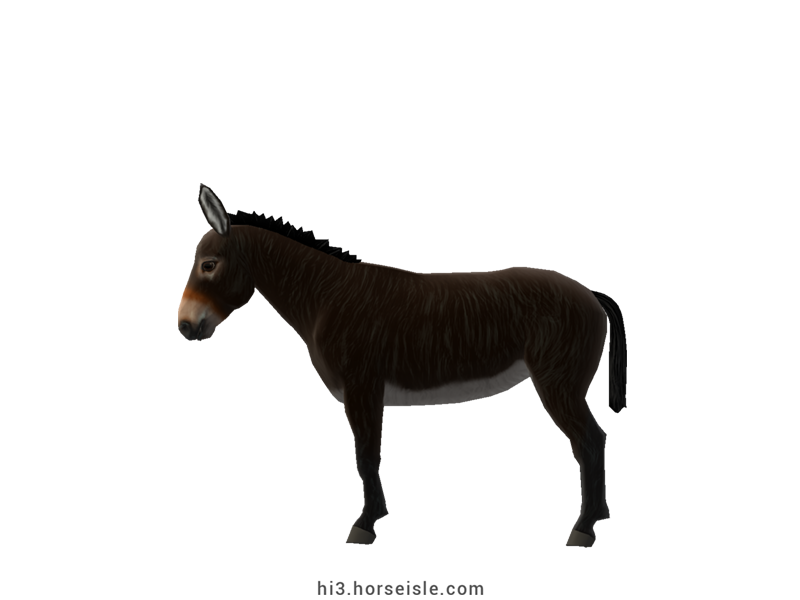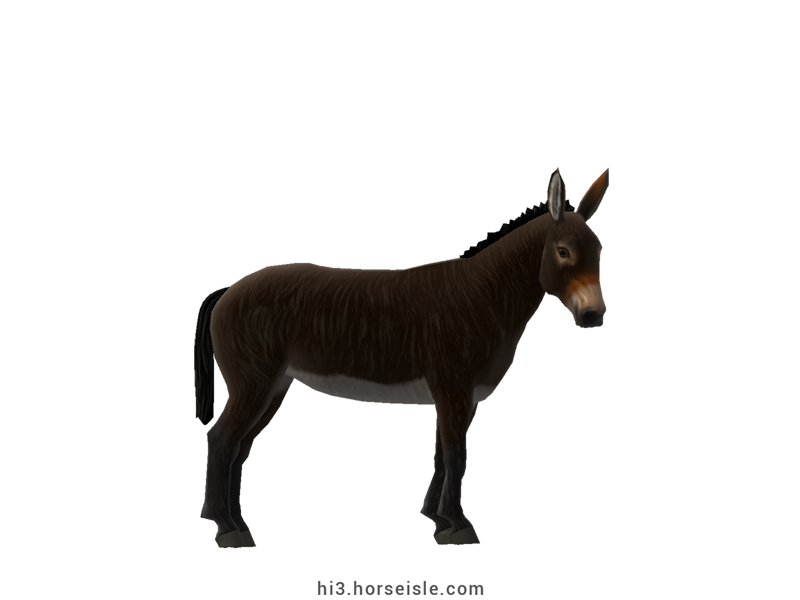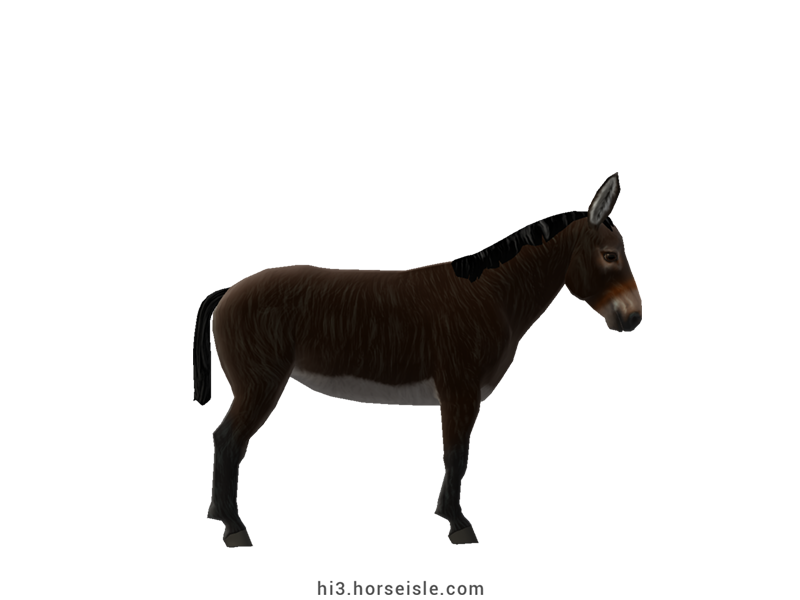Our Massive Real World Equine Reference!
[ INDEX ] Equine Type: Donkey Breed: Poitou Donkey [ PREV ] [ NEXT ]
A donkey of the marshes:
Throughout history, the Poitou province in France was known for its inhospitable marshes, which were less than ideal for breeding horses and donkeys. Nevertheless, at some point, probably during the Roman occupation of that area, the locals started breeding donkeys.
After several centuries, the Poitou Donkey emerged from these earlier donkeys around the 10th century. It was well-adapted for life in the humid marshes, and flourished where other donkey breeds could not.
The Poitou mule:
Bred for both the production of mules and for serving as a working animal, the Poitou Donkey became popular, and found its way to additional regions in France. During the 16th century, in order to improve the mules that were bred in the Poitou province, breeders developed a new type of draft horse which became known as 'Poitevin' and 'Mulassier' (see the 'Poitevin' for more information). Poitevin mares were crossed with Poitou jacks to create the Poitou Mule, which became known as one of the best working mule breeds not only in France, but in nearby European countries as well (see the 'Poitou Mule' for more information.)
The Poitou mule was so successful, that breeders bred thousands of Poitevin mares and Poitou donkeys in order to fulfill the demand for mules. All of these breeds remained popular in France until the second half of the 20th century, when mechanization of agriculture and transportation left horses, donkeys, and mules all redundant. Gradually, the Poitou donkey nearly went extinct, to a point whereby at the end of the 1970s only around 40 or fewer donkeys were left.
Saving the donkey:
Conservation efforts followed soon after, and involved the establishment of a studbook, and setting up a breeding program. While the numbers of Poitou donkeys slowly increased, the breed still remains rare today. It is found mostly in France, where it serves for breeding Poitou Mules, and for recreational riding and driving.
The donkey who wears a pajama:
Back in the early 20th century (and probably even before that), Poitou donkeys were also raised and bred on the Isle of Rhea, which is located not far from the shores of the Poitou region. For decades, the donkeys there were used for work in the local mosquito-infested salt marshes. In order to protect their donkeys' legs from the swarms of mosquitos, the locals started dressing their donkeys with a protective layer of clothing that covered the donkeys' legs, and in some cases also their abdomen and part of their back.
Today, Poitou donkeys on the Isle of Rhea don't work in the marshes anymore, and instead are used for tourist rides. However, they still wear this peculiar garment, known as 'pajama,' to keep the tradition going.
An iconic matted coat:
Other than being known for producing excellent mules, and for wearing pajamas, the Poitou donkey is also known for its ability to grow a unique light-brown matted coat, called 'cadanette.' This coat can grow to an impressive length that surpasses the donkey's abdomen, and sometimes even reaches the ground, thus giving the donkey an appearance as if it wears a blanket of cords over its body.
That said, the matted layer is not the true coat of the Poitou donkey, but grows on top of it. The true coat of the Poitou is as short as the coat of a regular donkey but is softer.
Conformation:
The Poitou Donkey is also famous for its massive head, thick leg joints, and humongous ears. In fact, its ears are so large that they often lie flat to the sides unless the donkey actively holds them up. The rest of the Poitou's conformation, however, is similar to that of an ordinary mammoth donkey.
Performance metrics:
The following are the: range, average, (SD), and MOE of performance metrics of ordered Poitou Donkeys in Horse Isle (not bred ones). In rare cases,
Speed: 12.8-14.4, 13.7 (0.3), 0.07.
Sprint: 24-37, 31 (3), 0.53.
Accel: 0.71-0.87, 0.79 (0.03), 0.01.
Decel: 0.86-1.04, 0.96 (0.04), 0.01.
Jump: 4.93-5.17, 5.05 (0.06), 0.01.
Pull: 2.12-2.74, 2.46 (0.15), 0.03.
Turning: 34.83-47.38, 41.81 (2.64), 0.52.
Reverse: 1.8-2.3, 2.1 (0.1), 0.02.
Stamina: 48.45-54.06, 51.34 (1.2), 0.23.
Reaction: 0.74-0.84, 0.79 (0.02), 0.00.
Coat:
Poitou Donkeys come only in the color of brown-black, but when they grow a cadanette, the color of the cadanette is brown. Therefore, in Horse Isle, Poitou Donkeys can also have a brown coat, although it is extremely rare. If they have a mealy pattern, the mealy hairs must be grey rather than white, and therefore donkeys with excessively white mealy hairs will be penalized.
Height:
Poitou Donkeys stand between 13.1hh and 14.3hh.
[ INDEX ] [ PREV ] [ NEXT ]





